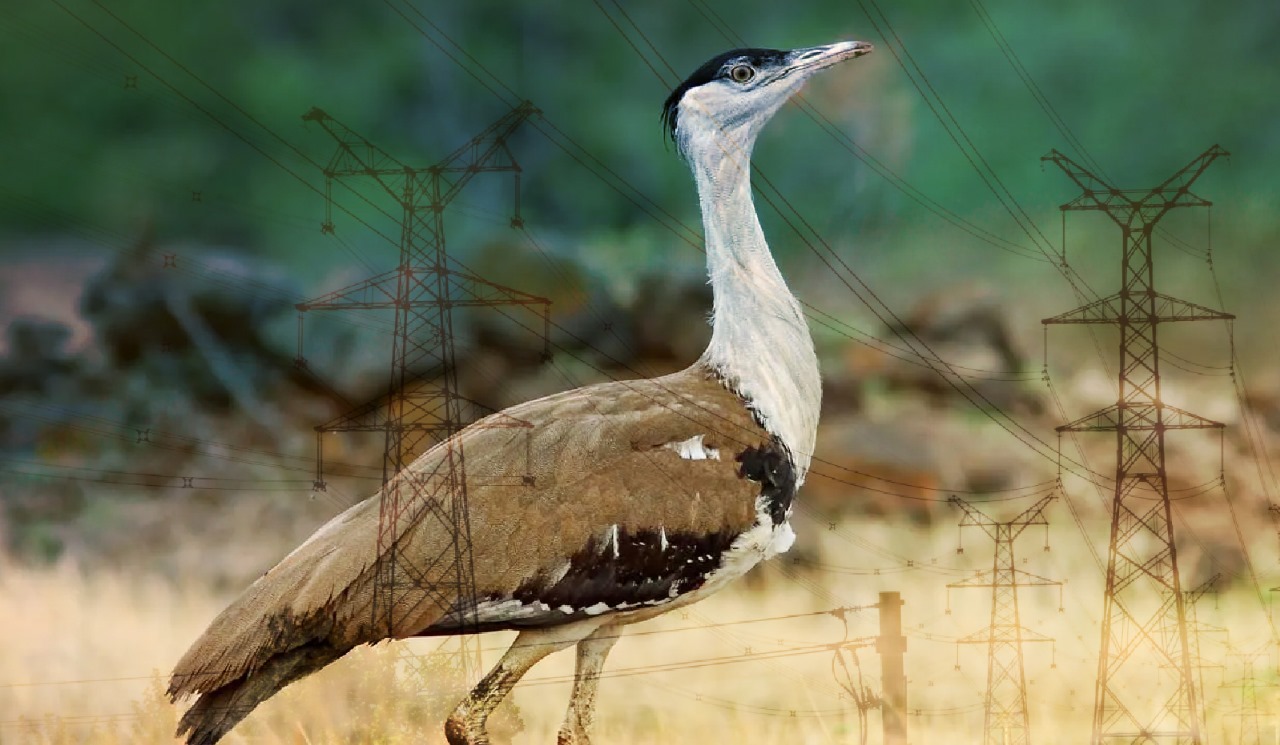Why in the news?
Recently, the Supreme Court modified its earlier order to place a blanket direction for undergrounding high-voltage and low-voltage power lines in the Great Indian Bustard habitat.
Background of the case
- A 3-Judge bench of the SC was hearing an application for modification by the Union MoEFCC, Ministry of Power, and Ministry o,f New and Renewable Energy against an earlier order.
- Earlier in 2021, the Court placed restrictions on the setting up of overhead transmission lines.
- It appointed a committee to evaluate the laying of underground high-voltage lines on a case-to-case basis.
- All low voltage powerlines were directed to be laid underground in the "priority" and "potential" habitats of GIB in the future.
- On existing power lines, bird diverters were to be installed pending the conversion of overhead power lines into underground power lines.
Judgement of the SC
- Removed blanket direction for undergrounding high voltage and low voltage power lines in the entire region.
- Constituted an Expert Committee to
- Determine the scope, feasibility, and extent of overhead and underground electric lines in the area identified as priority areas.
- Review international best practices for conservation of similar species such as the Houbara Bustard in the Middle East.
- Facilitate conservation and protection measures for GIB as well as other fauna specific to the topography.
- Reasons for reversing earlier judgment:
- Diverse factors are responsible for the reduction in the GIB population like low fecundity, fragmentation, habitat loss, predators, loss of prey, etc.
- Issues in laying underground cables: risk to the safety of farmers under whose land the cables are laid; higher transmission loss; increase in electricity plant downtime; unsafe and impractical to underground high-voltage cables in deserts; high cost; issues related to land acquisition, etc.
- Supreme Court observed that there was a dilemma between safeguarding biodiversity and mitigating the impact of climate change.
About the dilemma
- Need for renewable energy to fulfill climate commitments: Rajasthan and Gujarat (primary GIB habitats) are important for the generation of solar power and other renewable energy sources.
- As per India's Nationally Determined Contribution, it aims to generate 50% cumulative electric power installed capacity from non-fossil fuel-based energy resources by 2030.
- Threat to GIB: Projects like solar power plants or windmills in the area can harm the critically endangered Great Indian bustard.
Solution for the dilemma (Given in the judgment)
- The holistic approach to conservation by incorporating environmental conservation, social equity, economic prosperity, and climate change.
- Adopt a balanced approach by government and court which does not sacrifice either of the two goals at the altar of the other.
- National goals regarding climate change require a holistic understanding of sustainable development that balances immediate needs with long-term sustainability.
- An expert committee was appointed to balance the need for the preservation of the GIB with the need for sustainable development to bring expert opinion.
 About Great Indian Bustard
|




